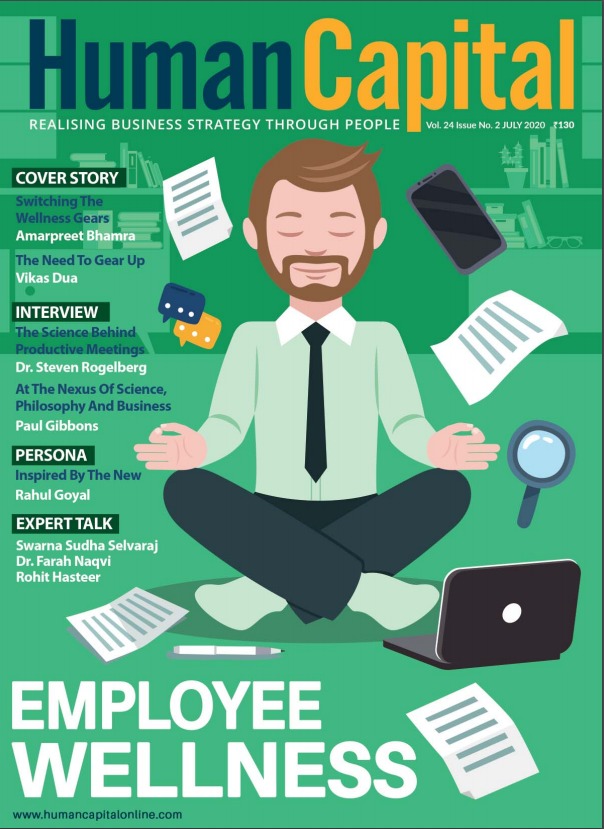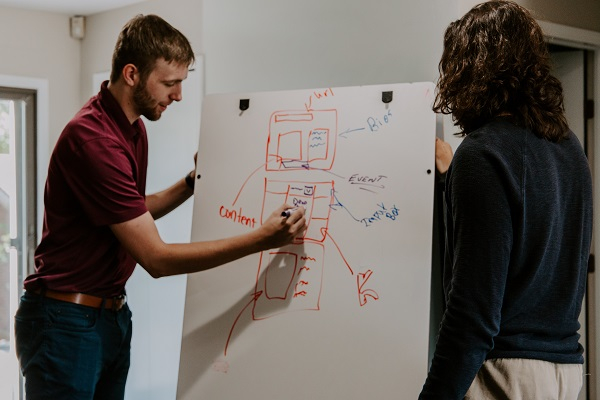The way in which a Learning module is designed has a telling impact on the participants. Therefore, this is an opportunity the Designer and Facilitator cannot afford to miss.
Nothing is flatter than a flat joke. And no one wishes to Nnarrate such jokes. Designing effective Learning is somewhat similar. It always runs the risk of falling flat. And if that is the case, then the consequences may not be a joke. However, designing an interesting and effective module is not everyone’s cup of tea. Though Learning ‘Content’ is available everywhere, truly effective ‘Content’ is in short supply Ineffective Training often leaves the participant with the same feeling as she gets when she emerges from viewing a monotonous film – bored, drained and regretting the money and time spent on the film. When a participant emerges with such a feeling, it is the death knell of that Training, the Trainer and indeed that department or the Training consultancy. Needless to say, no one wants to be in those shoes.
A Wonderful Learning Experience
Instead, when you emerge from viewing a brilliant film such as Jaws by Steven Spielberg or Pather Panchali by Satyajit Ray, you emerge with thoughts and introspection. The few hours that you spent seeing the movie, somehow touched you, made you think, held out a slice of life experience, which you learn from, run over and over in your mind and may even resolve to do something as a result.
Effective Learning is similar. It leaves you charged, excited and rearing to implement some of the new things you have learnt as a result.
Following the Design
Having done an effective Training Needs Identification (TNI), and zeroed into the key learning gaps that need to be addressed, it is essential to develop solutions around those gaps. Just as a building construction plan starts with a design plan, a Learning Design starts with the Learning Objectives. The Learning Objectives need to be drafted well. Needless to say, they need to be closed-ended and stated in a SMART way. The Performance that is being aimed for, the criteria of success and conditions under which the performance will be achieved, need to be mentioned, so that the Designers know what needs to be achieved at the end of the session or programme.
The bane of most Training is that it is left open-ended. Hence behavioural Training exudes a soft fuzzy feeling but rarely gets tested, while product or process Learning gets tested by abilities on the production floor which may be a bit too late to test. Remember, Training time is like a sacred space. It is here the employee needs are to be baptised with the right knowledge and practice. Making up for knowledge and practice gaps later during production is very difficult.
Learning Quotient
So, be it behavioural or hard skills, the participant should feel the urgency to learn, unlearn and relearn in this space. Far too often, the Learning phase is seen as a soft landing for new employees, before they get into the rut of real performance. But ironically, if we take the Learning phase as a real challenge and work seriously to enhance their abilities, chances are that the performing phase will be easier to manage and even lead. When the Duke of Wellington was asked how he managed to defeat the legendary Napoleon, he said that the seeds of success were sown in the playfields of Eton School, where he had studied. Indeed, the way we learn braces us for success or cripples us for life.
Getting into the ‘Zone’
The first hour of the Training session is very important. It is a challenging moment - you need to lay down the ground rules at the cost of sounding pompous, and at the same time, establish a climate of learning, mutual support and establish the credibility of the Facilitator. It is also the time when you assure the participants of the psychological safety of the Learning environment, which is important for everyone to learn freely, ask honest questions and not hide behind a façade of being knowledgeable, while churning doubts and insecurities in their mind. Often in Training parlance, it is known as getting the participant ‘into the zone’. Being in the ‘zone’ means not just comfortable and looking forward to learn, but someone whose curiosity has been heightened and is eager to go the whole hog to undergo the journey of transformation that good learning entails.
Ice-breakers are a great help in enabling participants to get into the ‘zone’. However, while designing, a delicate balance needs to be maintained between entertainment and learning, the blend of which is now famously christened ‘edutainment’. If the Energizer is a lot of fun, but unrelated to the content of the Learning session, then you run the risk of participants having a lot of fun and then reluctantly returning to the learning session for serious learning. Instead, the subject has to be blended into the energizers. For example, for Introductions, Facilitators often play ‘Two Truths and One Lie’. If the session is on financial management, then the truths and the lies about the Individual could be around his or her saving habits, their first earning and so forth. It would set the context for the financial learning that participants would undergo.
Good Design
Designing a learning module is similar to being a writer or an architect. You need to think through the message you want to impart, the learning participants need to imbibe and the outcome that is to be delivered.
Some key considerations would be how you time and schedule sections and subsections, sequencing of the learning, how will participants apply their learning or learn through experience and how can all of this be varied. These are concerns that need addressing for good design.
Presentation Mode
Let us start with the default mode, which is the Presentation Mode in a Lecture format. The Facilitator opens up the Presentation starts to share his perspective on the topic. Well, such days are thankfully numbered, because now the attention span of the audience is shrinking and it is important for the presentation to be varied with panel discussions, role-plays, storytelling, debates and discussions and Experiential Learning Activities or ELAs.
Why do we need to vary the modes and how can we do that? To know that, wait for the next issue.
Follow and connect with us on LinkedIn, Facebook, Instagram, Twitter for latest HR news and insights.

Do you think hybrid work arrangements would be a common feature of the workplaces going forward?
Trending
-
SBI General Insurance Launches Digital Health Campaign
-
CredR Rolls Out 'Life Happens' Leave For Its Employees
-
Meesho Announces 30-Week Gender-Neutral Parental Leave Policy
-
Microsoft Unveils Tech Resilience Curriculum To Foster An Inclusive Future
-
60% Indian Professionals Looking For Job Change Due To COVID: Survey
-
SpringPeople And Siemens Collaborate For Digital Transformation Push
-
86% Professionals Believe Hybrid Work Is Essential For Work Life Balance: Report
-
Almost 1 In Every 3 People's Personal Life Affected Due To Work Stress
-
Meesho Rolls Out Reset And Recharge Policy For Employees
-
80% Of Talent Leaders & Academics Say Pandemic Changed Skill Needs For Youth: Report
-
Hero Electric Rolls Out 'Hero Care' Program For Employees
-
Human Capital In Collaboration With ASSOCHAM Hosts Virtual Conference
-
IKEA India, Tata STRIVE Collaborate To Create Employability And Entrepreneurship Opportunities
-
SAP India, Microsoft Launch Tech Skilling Program for Young Women
-
DXC Technology, NASSCOM Collaborate For Employability Skills Program
-
Lenskart To Hire Over 2000 Employees Across India By 2022
-
Mindtree Launches Learn-and-Earn Program
-
Tata AIA Extends 'Raksha Ka Teeka' To Its Employees
-
Swadesh Behera Is The New CPO Of Titan
-
NetConnect Global Plans To Recruit 5000 Tech Professionals In India
-
Hubhopper Plans To Hire 60% Of Indian Podcasters By 2022
-
Corporate India Needs More Women In Leadership Roles: Report
-
Aon to Invest $30 Million and Create 10,000 Apprenticeships by 2030
-
Tech Mahindra Launches ‘Gift a Career’ Initiative for Upskilling of Youth
-
40% Women Prefer Flexible Working Options in Post-COVID World: Survey
-
3 out of 4 companies believe they can effectively hire employees virtually: Report
-
Vodafone , CGI and NASSCOM Foundation launch digital skills platform
-
Odisha: Bank, postal employees to deliver cash for elderly, differently-abled persons
-
Skill India launches AI-based digital platform for "Skilled Workforce"
-
Hiring activity declines 6.73% in first quarter: Survey
-
70% startups impacted by COVID-19 pandemic
-
Bajaj Allianz Life ropes in Santanu Banerjee as CHRO
-
Over 70 Percent MSMEs look at cutting jobs to sustain businesses
-
93 Per Cent employees stressed about returning to office post-lockdown
-
Johnson & Johnson India announces family benefits for same gender partners
-
Indian firms turning friendly towards working mothers
-
Welspun India names Rajendra Mehta as new CHRO
-
Wipro partners with NASSCOM to launch Future Skills platform



Human Capital is niche media organisation for HR and Corporate. Our aim is to create an outstanding user experience for all our clients, readers, employers and employees through inspiring, industry-leading content pieces in the form of case studies, analysis, expert reports, authored articles and blogs. We cover topics such as talent acquisition, learning and development, diversity and inclusion, leadership, compensation, recruitment and many more.
Subscribe Now












































Comment